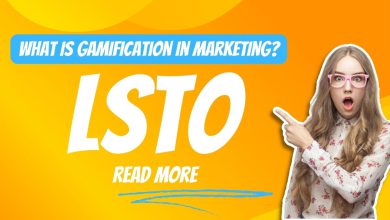
In the digital age, viral marketing campaigns have the power to capture the attention of millions and propel brands to unprecedented levels of visibility and success. While it may seem like achieving virality is a stroke of luck, there are underlying strategies and principles that contribute to the success of these campaigns. In this blog post, we unveil the secrets of viral marketing campaigns and provide insights into how businesses can create content that spreads like wildfire.
1. Understanding Viral Marketing:
Viral marketing has become synonymous with digital marketing, and it is crucial to understand its significance in contemporary advertising. Viral marketing campaigns are essentially strategies that aim to generate buzz and maximize the reach of a brand’s message by leveraging social media platforms or other online channels. These campaigns typically involve creating content that is entertaining, informative, or thought-provoking enough to be shared widely across various digital networks.
The power of viral marketing lies in its ability to extend the reach of a brand’s message far beyond their immediate target audience. This type of marketing can create exponential growth for a company because each share or repost potentially exposes the content to new people who may not have otherwise encountered it. Additionally, viral campaigns tend to be more cost-effective than traditional advertising since they rely on user-generated sharing rather than paid promotion.
2. Tapping into Emotions:
One of the key strategies used in these campaigns is tapping into emotions. Emotional content has the power to evoke strong reactions from people which can lead them to engage with and share your content.
Humor is one of the most common emotions used in viral marketing campaigns. People love to laugh and share funny content with their friends and family on social media platforms. Brands that use humor in their marketing campaigns not only gain more engagement and shares but also create a positive association with their brand. By using humor, brands can connect with consumers on an emotional level which helps build trust and loyalty.
Another emotion that is often used in viral marketing campaigns is inspiration.
3. Storytelling and Narrative:
In a world where attention spans are dwindling, the power of storytelling has become more important than ever before. When it comes to creating an impactful viral marketing campaign, storytelling is key. A well-crafted story can captivate audiences and leave them wanting more. It’s no surprise that many successful marketing campaigns have used this technique to create a buzz around their brand.
Narratives that engage and captivate audience are the perfect way to approach a viral marketing campaign. These stories connect with people on a personal level, allowing them to feel like they’re part of something bigger than themselves. Whether it’s through relatable characters or emotional moments, a compelling narrative creates an emotional bond between the brand and its target audience. By tapping into these emotions, brands can create content that resonates with people long after they’ve seen it.
4. Creating Unique and Remarkable Content:
In today’s digital age, where content is king, it’s crucial to produce unique and remarkable content that stands out from the crowd. With millions of pieces of content being created every day, it can be challenging to make your mark on the world. However, if you want to get noticed by your target audience and attract more traffic, you need to create content that is both unique and remarkable.
The role of creativity in creating viral marketing campaigns cannot be underestimated. Creative thinking allows marketers to come up with new ideas that are not only innovative but also engaging. The most successful viral marketing campaigns are often those that have something surprising or unexpected about them. By incorporating humor or unusual elements into their campaign materials, marketers can capture the attention of their target audience and keep them engaged.
Moreover, creating unique and remarkable content is essential for building brand awareness and loyalty.
5. Leveraging Social Media Platforms:
Social media has revolutionized the way we communicate and interact with each other. It has also transformed the way businesses market their products and services. Viral marketing campaigns are one of the most effective ways to leverage social media platforms to reach a wider audience.
The success of a viral marketing campaign depends on how well it resonates with the target audience, how easily shareable it is, and how effectively it spreads across different social media platforms. Different social media platforms have different characteristics that make them more suitable for certain types of campaigns. For example, Twitter is ideal for short-form content such as memes and hashtags, while Instagram is perfect for visual content such as images and videos.
Facebook, on the other hand, offers a wide range of targeting options that allow businesses to reach specific demographics based on age, gender, interests, location, etc., making it a great platform for targeted advertising.
6. Harnessing the Power of User-generated Content:
User-generated content (UGC) has emerged as a powerful tool in the world of digital marketing. It is an effective way to engage customers and create brand awareness, increasing the potential of viral marketing campaigns. UGC refers to any content created by consumers rather than brands or companies, such as social media posts, videos, blogs, reviews, and testimonials.
The power of user-generated content lies in its authenticity and relatability. Consumers are more likely to trust recommendations from their peers than from traditional advertising methods. By involving users in creating content for a campaign, brands can tap into their creativity and passion for the product or service being promoted. This not only helps build a loyal community but also encourages users to share the campaign with their networks organically.
Moreover, UGC provides valuable insights into consumer behavior and preferences that can help businesses tailor their marketing strategies accordingly.
7. Seeding and Amplification:
Viral marketing is not just a buzzword, it is an effective way to drive traffic and increase brand awareness. However, creating a viral marketing campaign takes more than just uploading content on social media platforms and expecting people to share it. The real challenge lies in the initial seed exposure of your content. Seed exposure refers to the number of people you reach out to initially with your content.
The importance of seed exposure cannot be overstated because without it, your viral marketing campaign will have no chance of taking off. One strategy for achieving maximum seed exposure is by targeting influencers within your niche or industry. These are individuals who have a large following on social media platforms and can help amplify your message by sharing it with their audience.
Another strategy for kick-starting the sharing process is by creating content that resonates emotionally with your target audience.
8. Monitoring and Engagement:
Viral marketing campaigns are a powerful tool for businesses looking to create buzz around their brand or product. However, simply creating and launching a campaign is not enough. It’s crucial for brands to actively monitor and engage with their audience during a viral campaign to ensure its success.
Monitoring allows businesses to track the impact of their campaign in real-time. This includes tracking mentions on social media platforms, monitoring website traffic, and analyzing engagement metrics. By keeping an eye on these factors, brands can quickly identify what’s working well and make necessary adjustments to optimize their campaign for better results.
Engaging with the audience is equally important as monitoring. Active engagement allows brands to build relationships with their customers by responding to comments, addressing concerns, and showing appreciation for support. This type of interaction builds trust between brands and customers, leading to increased loyalty in the long run.
9. Measurement and Analysis:
Viral marketing campaigns have become a staple in the marketing world, especially in the age of social media. These campaigns aim to spread brand awareness by creating content that resonates with the target audience and encourages them to share it with their network. However, executing a viral marketing campaign is not just about creating great content; it’s also about measuring and analyzing its success.
Measuring the success of a viral marketing campaign involves tracking key metrics such as reach, engagement, and conversion rates. Reach refers to the number of people who have seen the content or ad, while engagement measures how much interaction it has received from viewers. Conversion rates track how many people took action after seeing or interacting with the content.
Analyzing these metrics can help businesses understand what worked well in their campaign and what didn’t.
Conclusion:
Viral marketing campaigns have the potential to propel brands to new heights of exposure and success. By understanding the underlying strategies and principles behind viral content, businesses can create remarkable campaigns that captivate audiences and inspire them to share. Let us unlock the secrets of viral marketing and harness the power of contagious content to drive brand awareness, engagement, and growth.




